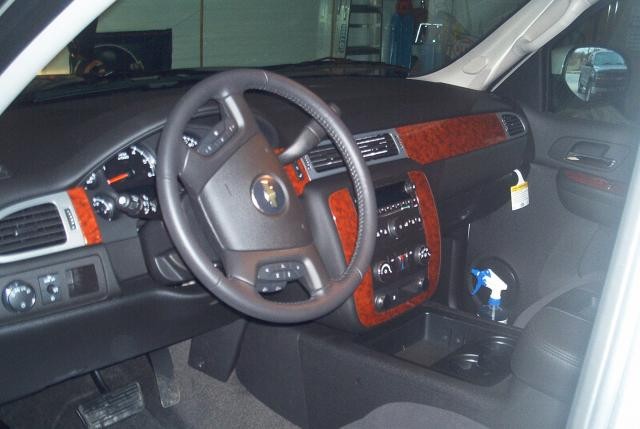Re: Hair line scratches on Wood Trim?
Mike, here is what I would like to correct. It's burl walnut. Thanks.
Wow! That' looks pretty bad, like someone has been cleaning it with a wire brush!
Without having the actual vehicle here to work on, here's the skinny on how to approach something like this...
The Burl Walnut obviously has some type of coating over it, so you're not working on Burl Walnut, you're working on the coating. Since it's clear, it's probably some type of urethane. Just a guess but it's highly unlikely they use the type of lacquer paint used in the furniture industry, so it's probably a high tech coating of some type that can withstand the extreme temperature changes cars and trucks are exposed to causing the components and thus the coating to expand and contract.
Regardless of what the coating is...the way you remove swirls and scratches out of any type of coating or material is to abrade the coating in such a way as to level the upper most surface area with the lowest depths of the defects you're trying to remover.
In other words you're trying to level the surface so that it is perfectly flat, not flat as in matte, but flat as in no below surface imperfections.
You have to variables that bring risk to the equation
1. Is the coating polishable?
2. Do you have enough film-build to safely work with without going through the coating.
I don't have the answer to either of the above questions but if I had the car here in front of me I would practice the basics,
- Evaluate the surface - (you already did this)
- Choose the right product
- Use good technique
If you cannot track down exactly what the coating is and my guess is that's a hard question to be able to find someone from the car company that actually has any helpful information, then what you do is approach it like paint and do two things,
- Use the least aggressive product to get the job done
- Test your first product of choice on an inconspicuous area and then inspect the results.
If the results look good then continue working the product to the surface of the component.
If the results look bad... you'll be glad you ONLY tested to an inconspicuous area.
As for products, to date when trying to remove scratches out of modern clear coats by hand I've had the best luck using SMAT products, maybe try the new ScratchX wit a clean foam or microfiber applicator pad.
I would definitely be taping off all the surrounding panels and components to avoid getting any product on them and wherever possible I would opt to work by machine.


